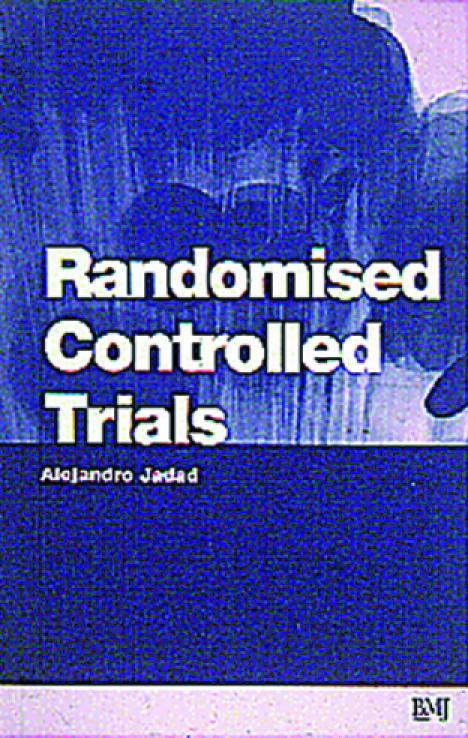Alejandro R Jadad
The book’s subtitle sets the tone. Born of the author’s struggle to find, understand, interpret, and use randomised controlled trials, this book is the fruit of years of jotting down questions and searching (often in vain) for answers. It is a concise but complete guide to randomised controlled trials, intended for the long list of their potential users.
Jadad leads us through the basics of randomised controlled trials, the sources of bias at all stages, the tools for assessing the quality of trials, the essentials of reporting and interpreting them, and how they fit into the overall picture of information used to make decisions. Using as a template the CONSORT statement, developed to improve the quality of reporting of trials, the author describes the essentials that users need to consider in interpreting trial results.
Particularly refreshing is the author’s clear exposure of the pitfalls of randomised controlled trials and his warnings to those overzealous converts to the doctrine of evidence based medicine who would put their total faith in nothing but randomised controlled trials. As a leader in the field of analysing, studying, and using such trials, Jadad, in simple and forceful language, brings home the absolute necessity of randomised controlled trials for rational decision making. Yet he also convincingly demonstrates their limits and the barriers to their effective use and describes other sources of information that must be taken into account when making healthcare decisions.
Breaking the book into short and easily digestible chapters makes it all the more user friendly, as does the author’s informal style of writing. Jadad’s book is unique. A visit to the library and a search on the internet of the “Earth’s biggest bookstore” revealed only titles that were at least twice the volume, and twice the price. None address the specific needs of users of randomised controlled trials as Jadad’s book does.
This is not to say that “doers” will not find ample matter for reflection. Quite to the contrary. All are well served by the author’s successful resistance of the temptation to write a general book about randomised controlled trials. As it is, the list of current, would be, and should be users of controlled trials is so inclusive that I am not sure the book will meet the needs of all of them. At present, the main users of randomised controlled trials are busy clinicians trying to practice evidence based health care and those developing guidelines to assist them. They will benefit most from the book. I hope that patients, their relatives, politicians, and healthcare financing agencies will also come to lean on this enjoyable and thought provoking book.
Figure.

BMJ Books, £12.95, pp 152
ISBN 0 7279 1208 9
Rating: ★★★


